The People Behind a Forgotten Industry
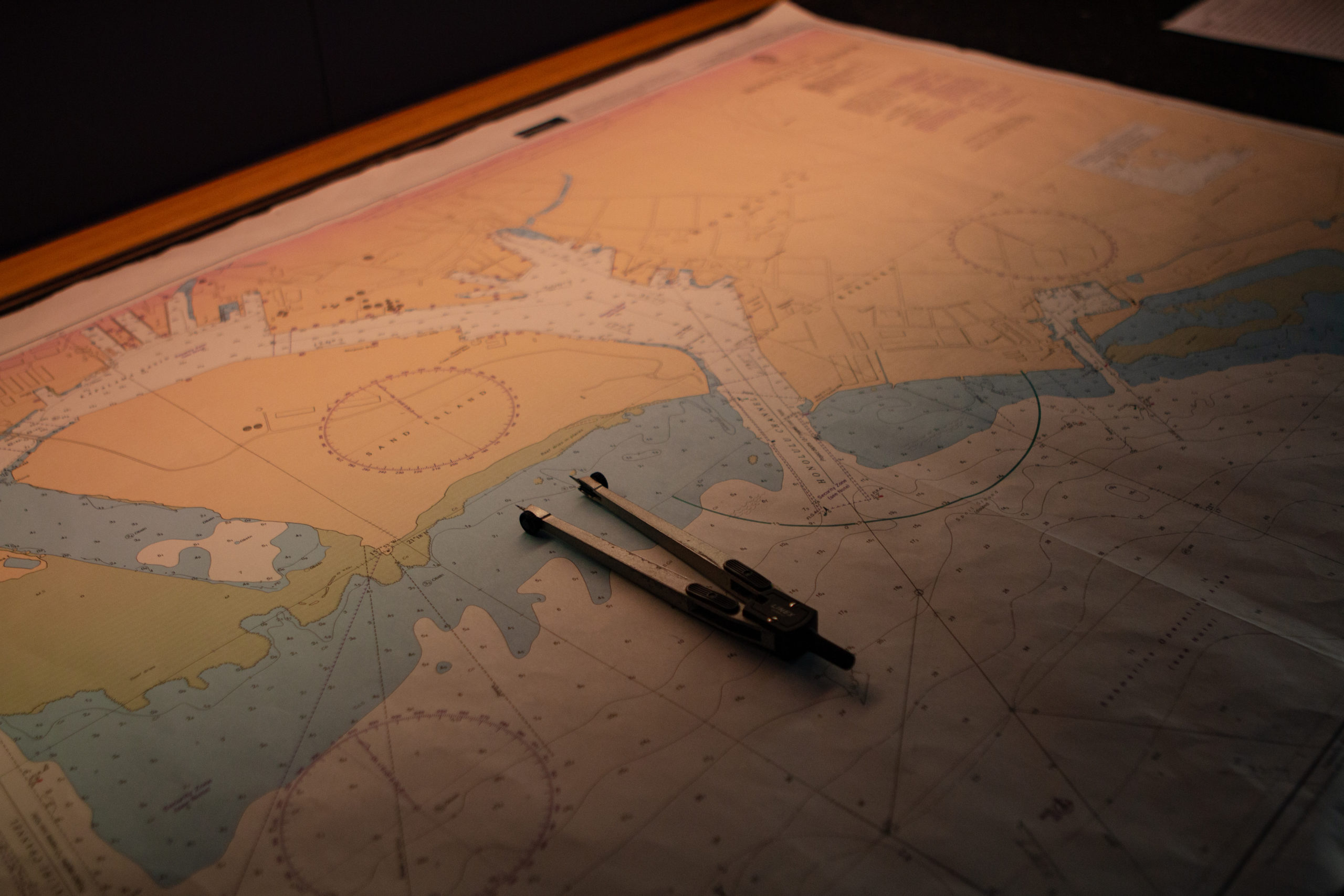

One: He is in the U.S. Military;
Two: My parents are divorced; or
Three: He is an absentee parent.
Well, he is none of these things. My father is a ship captain for Matson, the company that owns those huge container ships you see in Honolulu harbor. He is away for a total of six months every year, which means he misses a lot of major events in our lives: birthdays, performances and holidays.
Along with my father, there are many people in the shipping industry who are responsible for transporting goods and cargo, including the milk and toilet paper you have in your house, around the world. As my father’s deck cadet Margaret H. states, the shipping industry is a “forgotten industry” because people don’t think about how everyday consumer goods make it to their store shelves.
I decided I wanted to share some stories about my father, Margaret, and their coworkers because it’s about time we heard from the people who spend a large portion of their lives making sure we have everything we need to live our daily lives.
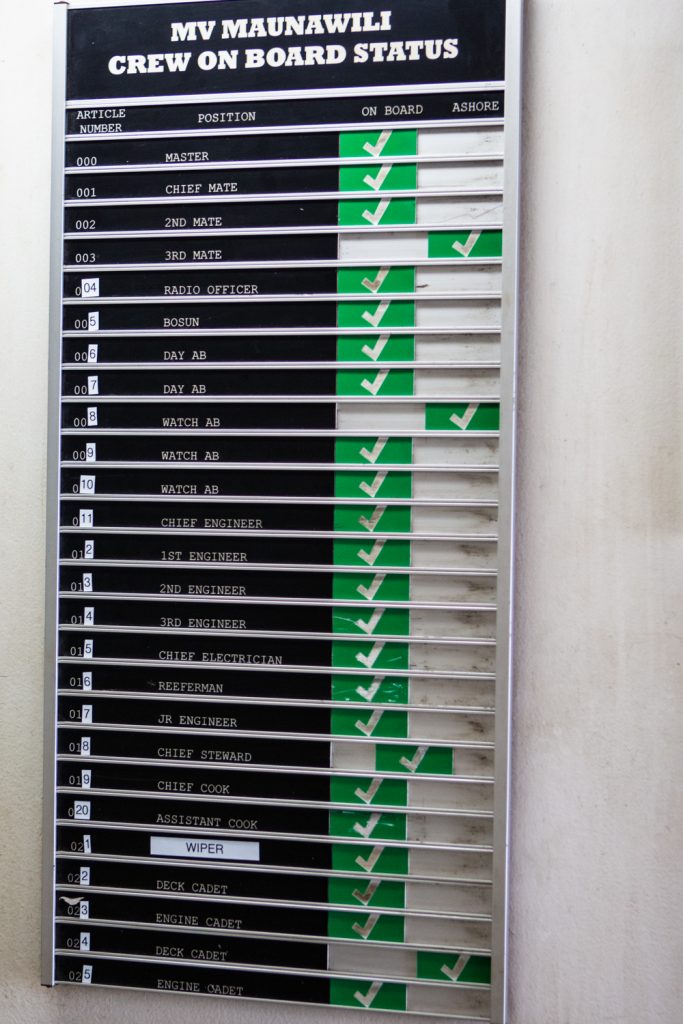
This is the sign that greets you when you first come on board the M.V. Maunawili. This sign shows whether or not the crew of this ship is “on board” or “ashore.”

This is my father, Captain Patrick Glenn. He has worked in the shipping industry for 32 years. He graduated from the California Maritime Academy in 1988 after being told by his father (my grandfather) that he wouldn’t make a good enlisted man. He met my mom in Turku, Finland, on their first job on a cruise ship. My mom had graduated from the US Merchant Marine Academy in 1988 and was his commanding officer.
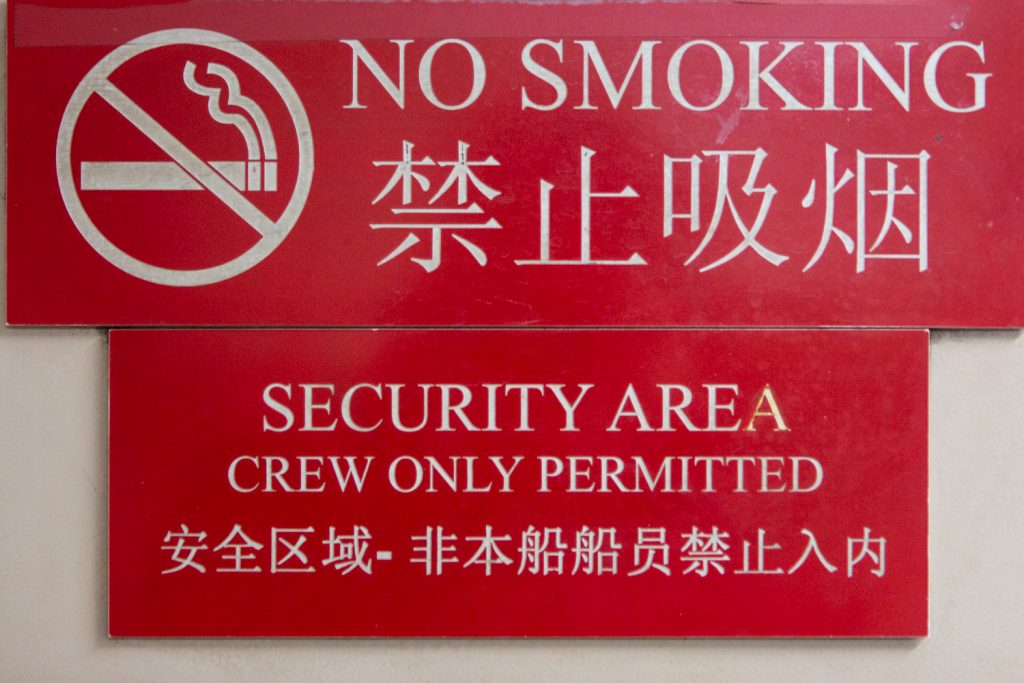
Most of the ship is only accessible to crew members so I am thankful that my father, the captain, gave me permission to enter the crew area. When the ship docks at a port, this sign ensures that vendors and port workers do not go into unauthorized areas. The M.V. Maunawili has taken its crew to ports all around the world. Every sailor has his favorite port. Hans S., the senior steward, names Hong Kong as his favorite. He can still remember the first time he entered the port. “It was the biggest culture shock of my life,” he said. Margaret H., the deck cadet, fondly remembers the first time she entered Two Harbors, Minnesota, where mountains in the background made the whole scene serene.
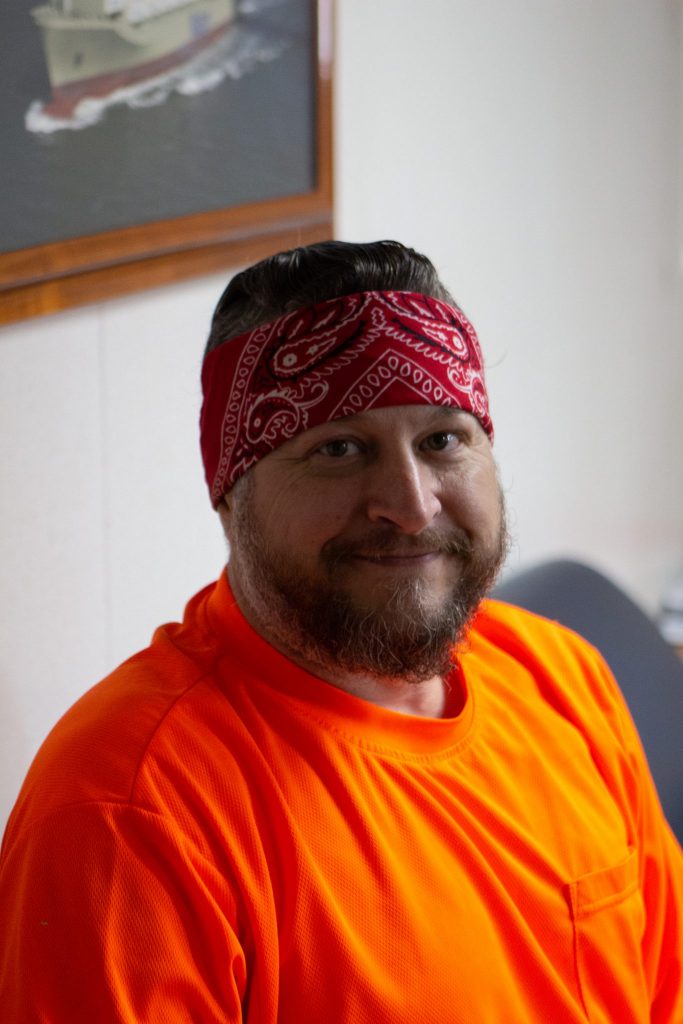
Doug B., an able-bodied seaman, says his favorite ports are Cardona, Columbia, Cagliari, Italy and Singapore.
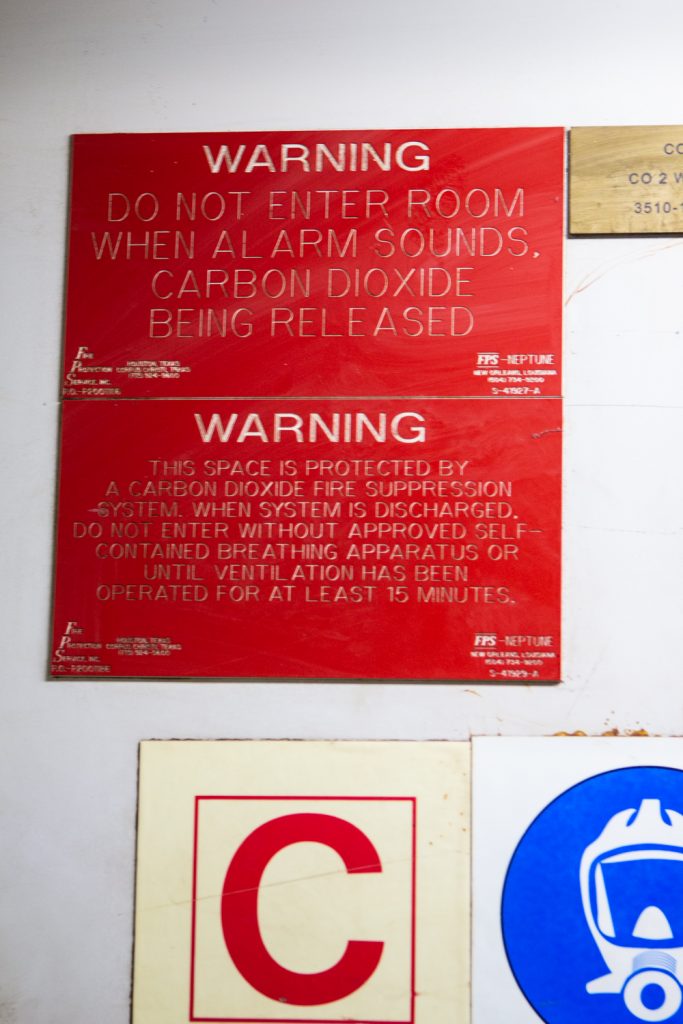
Not everything in the maritime world is serene, unfortunately. There are many different types of dangers that come with job and everyone I spoke to knows of someone who has died on the job. Because the crew is away from land for days and sometimes weeks, they have to be completely self-sufficient. This means that they need their own medical staff. The second mate is also the medical officer and along with the rest of the deck officers undergoes special medical training for working on ships.
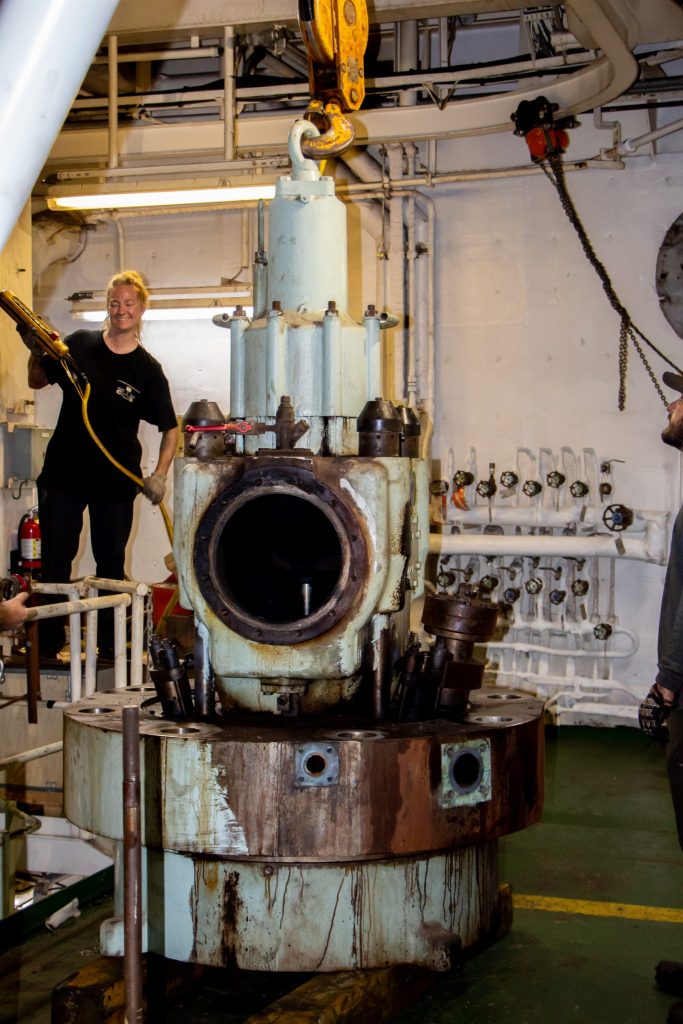
Ashley B., the third assistant engineer, remembers sadly how a man she worked with was complaining of jaw pain, which she later found was an early symptom of a heart attack. “If we had only known that and the antidote, which was rest and Advil, he might still be alive today,” she said.
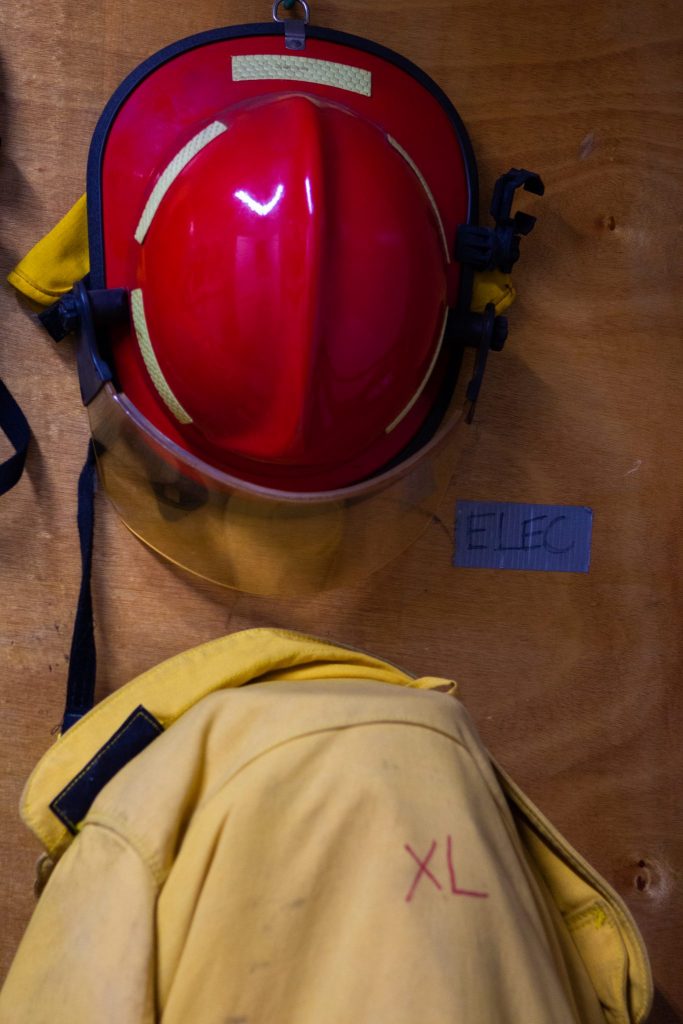
Everyone on the vessel is required to be trained in firefighting and fire safety. They have all had extensive mandatory fire training specifically for fighting fires on a ship, including engine fires. The regular crew is expected to attend a weeklong fire safety course while officers are required to complete a more rigorous training course. The crew on the ship also participates in weekly fire drills in full gear and masks.
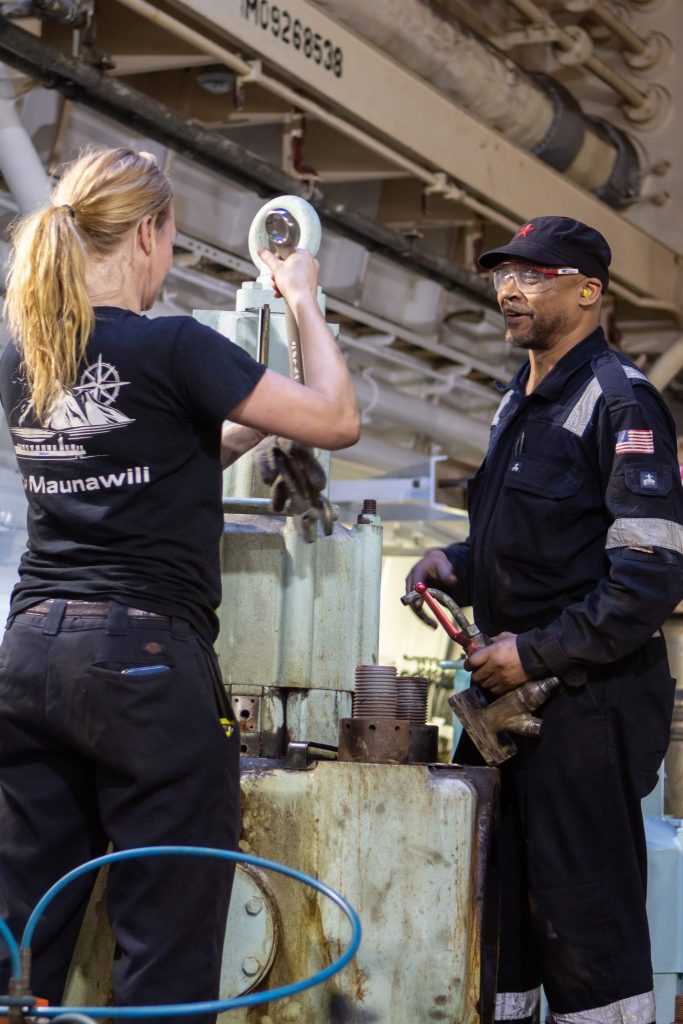
Engine department staff are responsible for making sure that the ship’s engines run smoothly, which ensures that the ship arrives at its destinations on time.
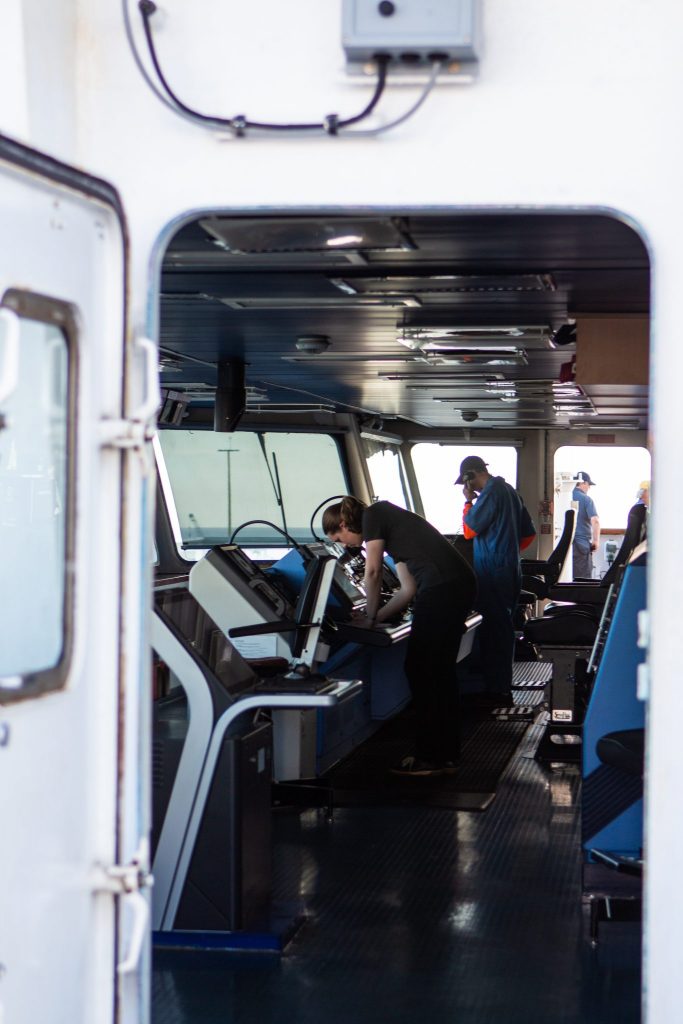
Deck cadet Margaret H. is on the bridge writing on the ships log book.
“You have to to be able to laugh at stuff out here because people do goofy, weird things,” says cadet Margaret H. when asked about lessons she has learned on the job. She described how the crew on one of the ships she worked on convinced a new sailor that there was a type of snake called a “scale moccasin” that only lived in ship ballast tanks. The sailor was so convinced by the story that he was always scared to go into the ballast tanks. Someone eventually told him the truth.
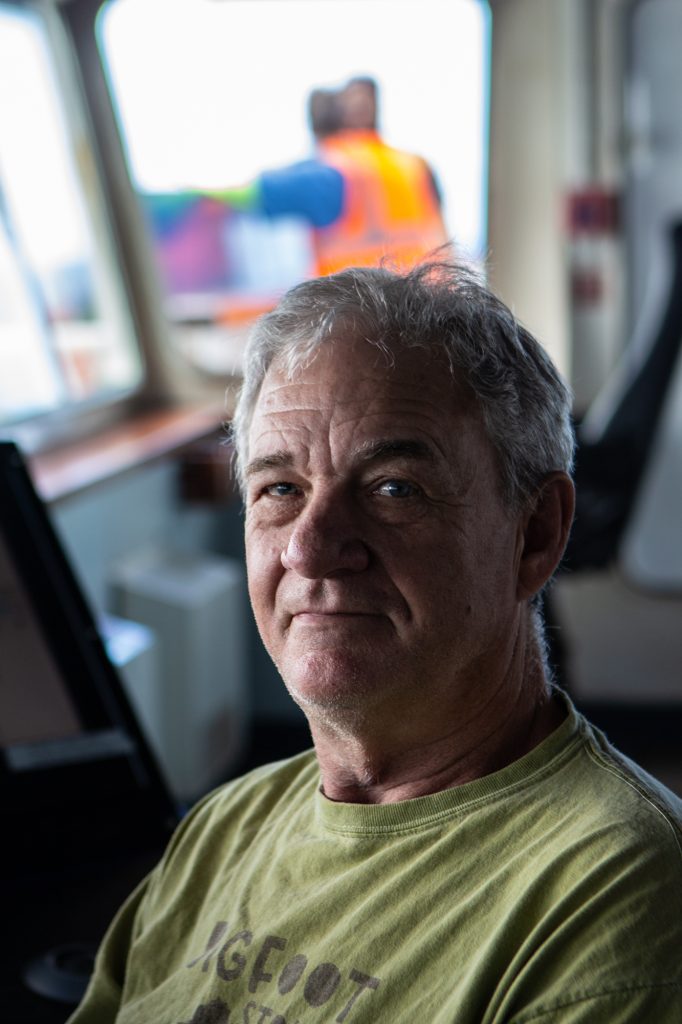
Everyone I spoke to joined the shipping industry through different routes. Alan F. started out as an unlicensed, ordinary seaman, worked on tugboats, and eventually worked his way up to second mate on the Maunawili. He has been in the shipping industry since 1975. Ashley B. followed in her brother’s footsteps to become an engineer and has been in the industry since 2012. Doug B. started in 2010 after leaving a job he was bored with.
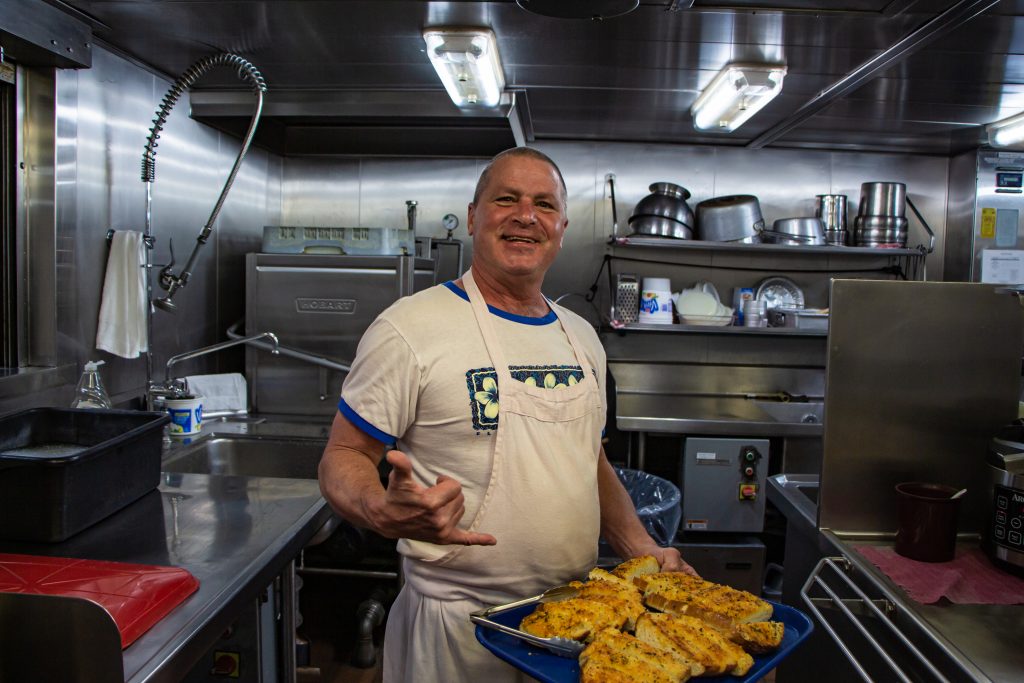
After almost 40 years in the industry, Hans S. says he is still trying to figure out what he wants to be.
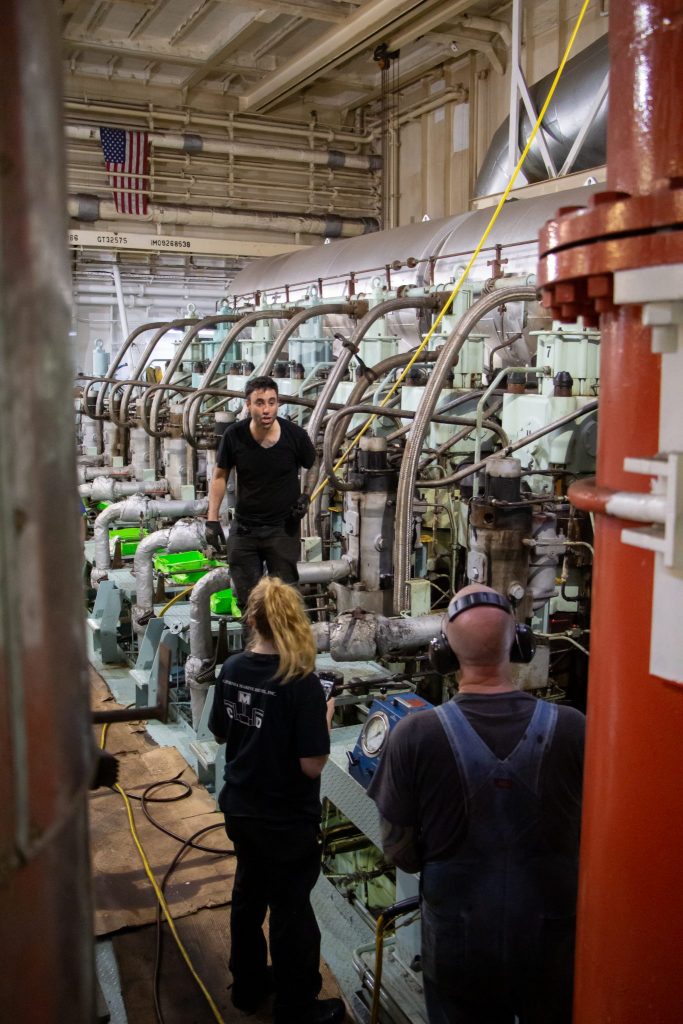
The crew working on a problem in the engine room. They all have to wear ear plugs or ear muffs in the engine room. It would seem like they are always angry at each other because they have to shout or gesture to get each others’ attention; but that is not actually the case.
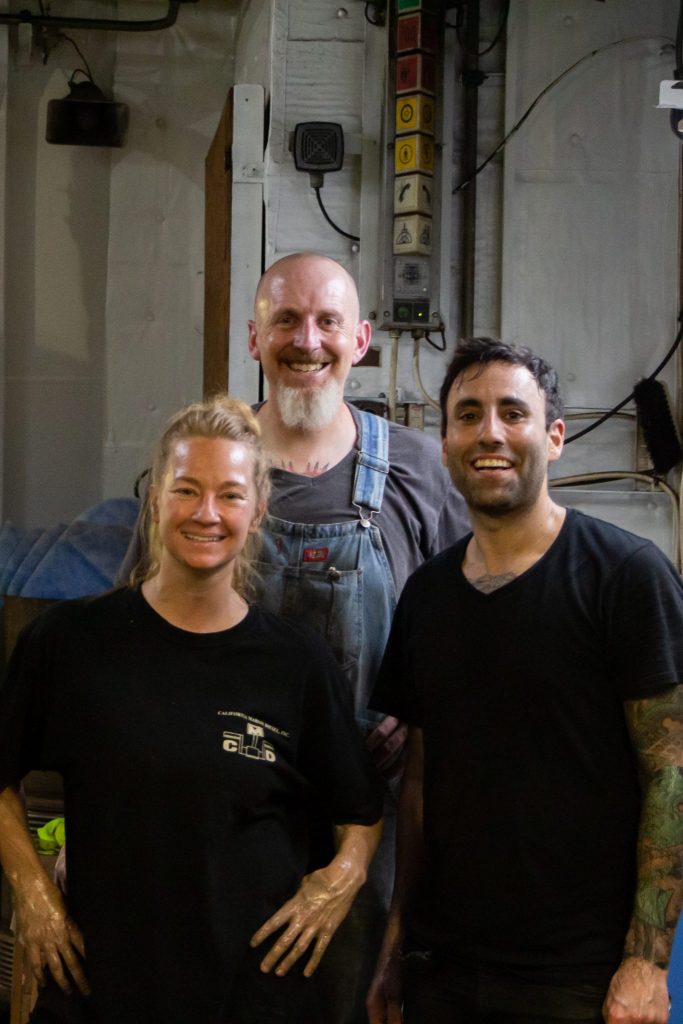
Working in the engine room is often dirty work. (See Ashley B,’s greasy hands in the photo.) But Ashley B. doesn’t think twice about it. She adds, “[You] definitely have to like being out at sea, and have a love of the ocean. You have to okay with being away from friends and family but I love it out here,” answered Ashley B. when asked about what one should know before joining the shipping industry. She added, “I like having this time on my own to improve myself.”
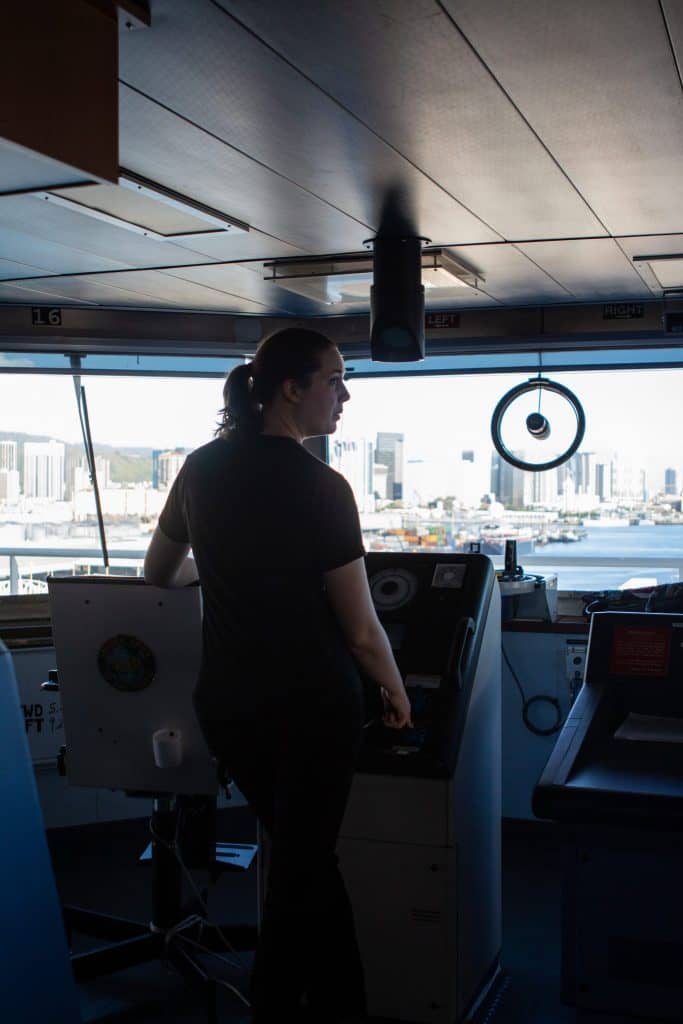
Margaret H. offers some advice from what she’s learned from the shipping industry. “You have to be intentional with your friends and have something to go home to. Boats are big, sailors are tough and the ocean is wide,” she said. “You can’t be afraid of asking questions or being yelled at. Not many people can say at my age that they have a lot of responsibility in their job but I can and I take pride in that.”
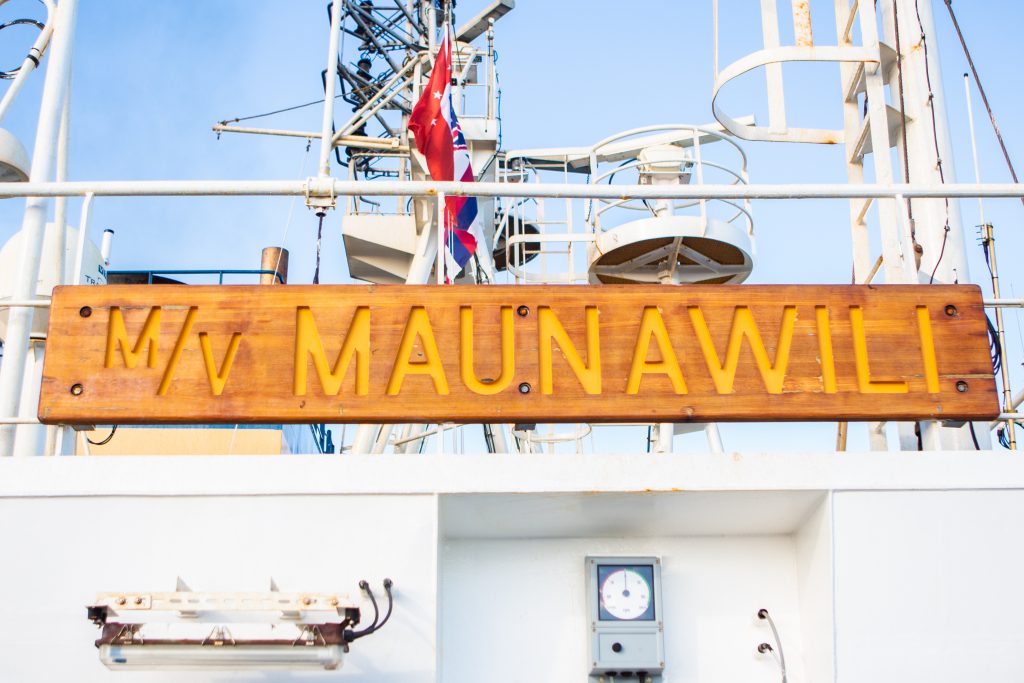
What I have learned from my time interviewing these amazing and fascinating people is that they do not get enough credit for what they do. Those of us in Hawaii should be even more appreciative because the majority of the things we consume or use come on ships like the M.V. Maunawili. So the next time you enjoy a glass of milk, or buy toilet paper at the store, take a moment to be thankful for the mariners that brought it to you.
